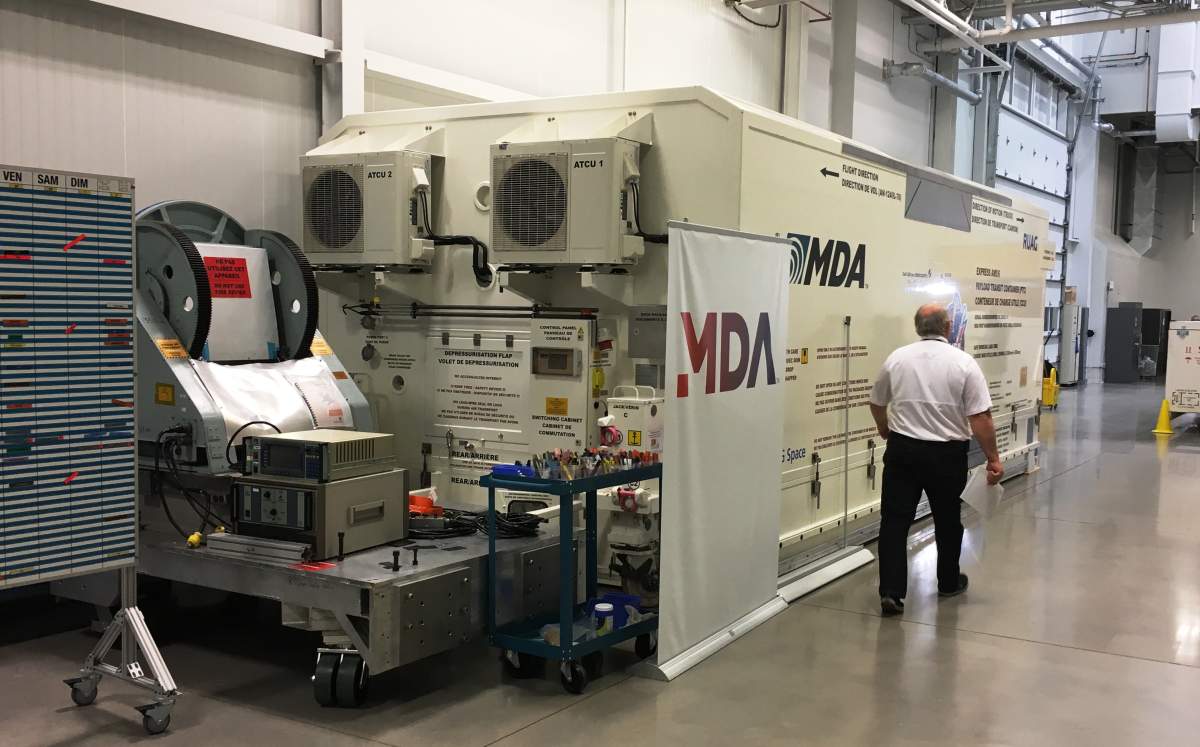The next generation of Canada’s Radarsat satellites are set to be launched this fall — after years-long delays and overspending.

The Canadian Space Agency showed off the latest piece of the Radarsat Constellation Mission, a group of three satellites, on Thursday.
They are expected to orbit the earth at an altitude of about 600 kilometers.
They’re being built for the CSA on Montreal’s West Island by a private company, MDA.
Joanna Boshouwers, a general manager with MDA, says the satellites will have three main missions.
“Maritime surveillance, environmental monitoring, and disaster management,” Boshouwers said. “They’re in an orbit that’s moving and between the three of them, they cover the earth every four days. They’ll cover 90 per cent of the globe over that time.”
The project is late and over budget. The three were supposed to be deployed separately, with the first launch scheduled for 2014. Instead, the three will now go up together.

Get daily National news
The initial budget for the RCM was about $600 million dollars. It’s now ballooned to more than a billion dollars.
The RCMs are designed to last for seven years in the rigors of space, but could go on longer.
When the original Radarsat-1 was launched in 1995; it was designed for five years, but lasted for 17. Its successor, Radarsat-2, was launched in 2007 and designed to last seven years. Eleven years later, it’s still operating.
“Based on previous experience, we hope it will last longer,” said Guennadi Kroupnik, a Canadian Space Agency director. “The most important thing is the influence of the space environment and space radiation. It makes electronics age and fail with time.”
Deploying the three satellites together has been a challenge. A Swedish company, RUAG, has designed a dispenser system that will eject them one after another.
Because Canada doesn’t have a rocket program, the RCM satellites will be carried into space by a private company. Elon Musk’s Space X will take them up on the Falcon 9 rocket.
Canada has used Space X before. It carried up the CSA’s CASSIOPE satellite in 2013.
The RCM still doesn’t have an exact launch date. There’s a window in late November, but the closer it gets, the smaller the window.
WATCH: Coverage of Space X launches on Globalnews.ca
- Officials stress Calgarians must save water after Bearspaw main break sees no drop in usage
- Snowmobiler dies in avalanche in Rocky Mountains in northeastern B.C.
- Yukon-Alaska border rocked by 3 earthquakes in final hours of 2025
- Pimicikamak chief requests military help as power outage crisis continues













Comments